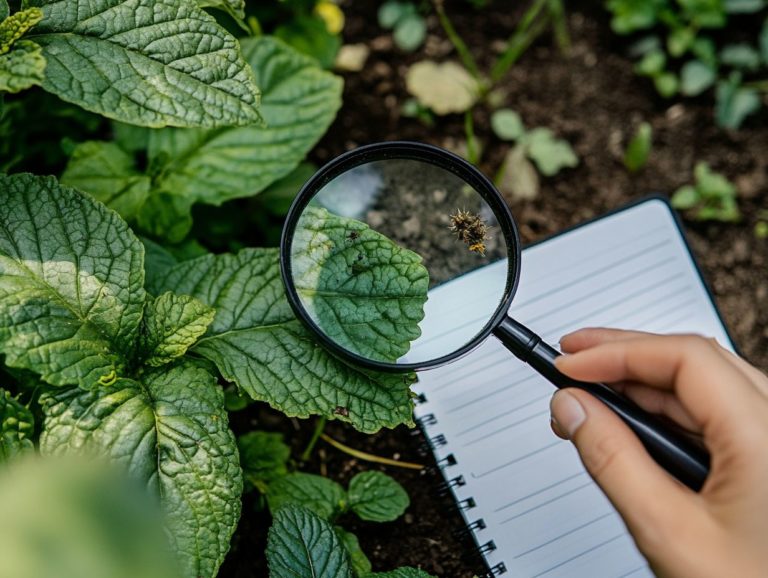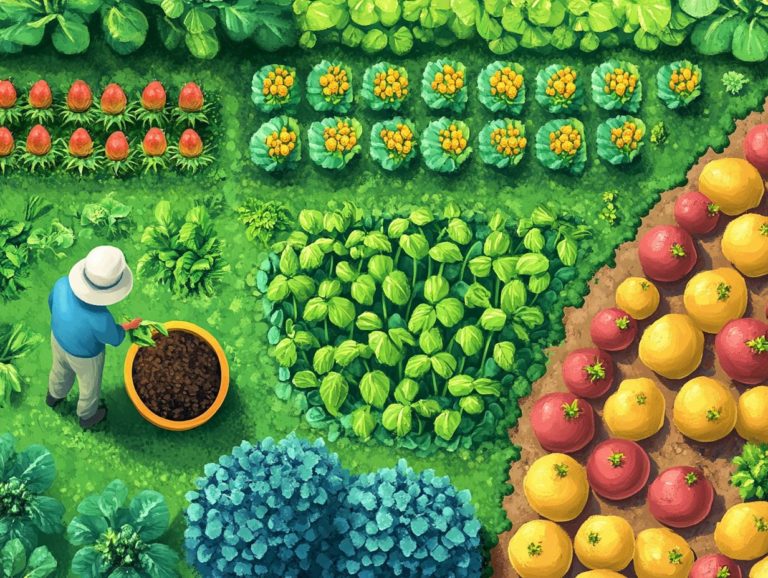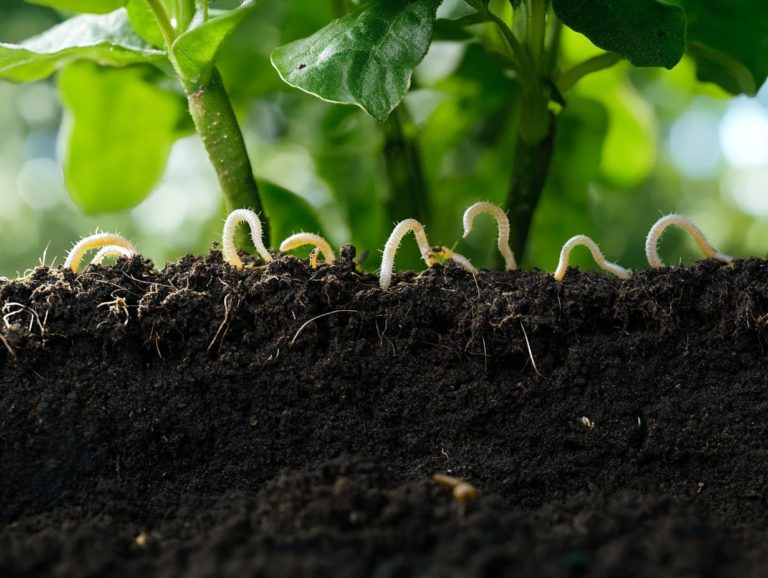The Dangers of Chemical Pesticides
For years, chemical pesticides have been essential in agriculture, promising enhanced yields and effective pest control. However, their extensive use raises significant questions about health risks, environmental impacts, and food safety, particularly concerning pesticide residues and their effects on human health.
This article explores what chemical pesticides are, their common types, potential health consequences, and their broader impacts on ecosystems and wildlife. You ll also discover natural and organic alternatives, alongside current regulations aimed at protecting both farmers and consumers.
As you navigate the complexities surrounding these substances, consider safer, more sustainable options available.
Contents
- Key Takeaways:
- What are Chemical Pesticides?
- Health Risks of Chemical Pesticides
- Environmental Impact of Chemical Pesticides
- Alternatives to Chemical Pesticides
- Regulations and Safety Measures
- Frequently Asked Questions
- What are chemical pesticides and why are they dangerous?
- How do chemical pesticides harm humans?
- What are the environmental dangers of chemical pesticides?
- Are there safer alternatives to chemical pesticides?
- How can I protect myself from the dangers of chemical pesticides?
- What steps can we take to reduce the use of chemical pesticides?
Key Takeaways:
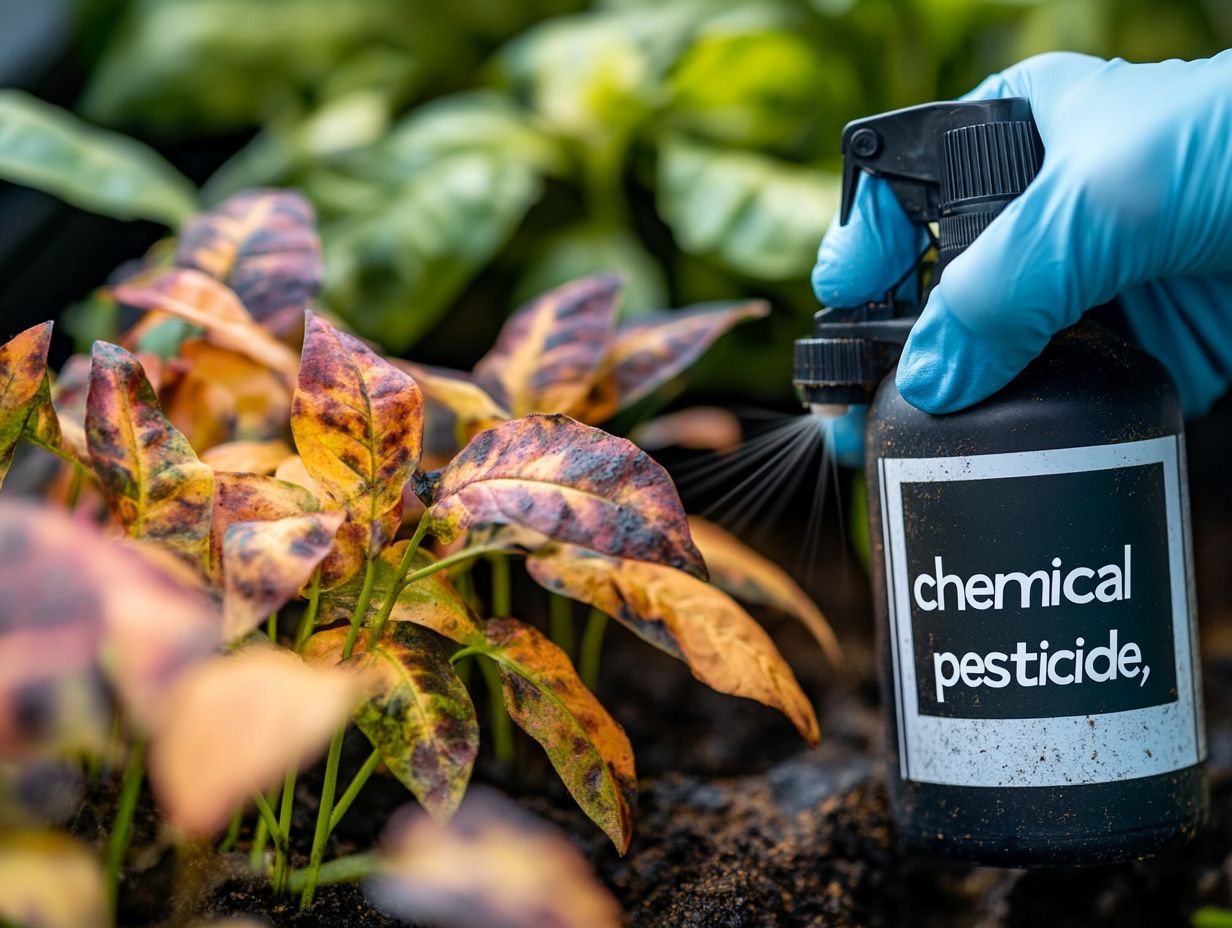
- Chemical pesticides can pose serious health risks, affecting your health and well-being, including cancer, neurological damage, and reproductive issues.
- The widespread use of chemical pesticides harms the environment, disrupting ecosystems and endangering wildlife.
- Consider safer alternatives to chemical pesticides for a healthier environment.
What are Chemical Pesticides?
Chemical pesticides are substances designed to manage pests that threaten agricultural crops, human health, or the environment. They include types like insecticides, herbicides, and fungicides, each targeting specific pests or diseases.
Insecticides control insect populations and vary based on active ingredients. For instance, organophosphates, which are a type of insecticide, are known for their effectiveness against many insects. These compounds, such as chlorpyrifos, disrupt pest nervous systems but raise concerns about their effects on human health and the environment. Carbamates offer a similar function but generally have lower toxicity.
Herbicides are used to combat unwanted plants and come in both pre-emergent and post-emergent forms. Glyphosate is a well-known example. Meanwhile, fungicides are crucial for managing plant diseases caused by fungi, with agents like propiconazole effectively targeting specific fungal pathogens.
These pesticides can be applied using various methods, including spraying and granulation, showcasing their versatility in managing pest populations across different agricultural landscapes.
Health Risks of Chemical Pesticides
The health risks of chemical pesticides are a growing concern, especially regarding the impact of pesticides on soil health. Exposure can lead to serious conditions like cancer and neurotoxicity.
In summary, it s essential to understand these health implications, alongside the environmental challenges posed by chemical pesticides, to make informed decisions regarding their use.
Potential Health Consequences
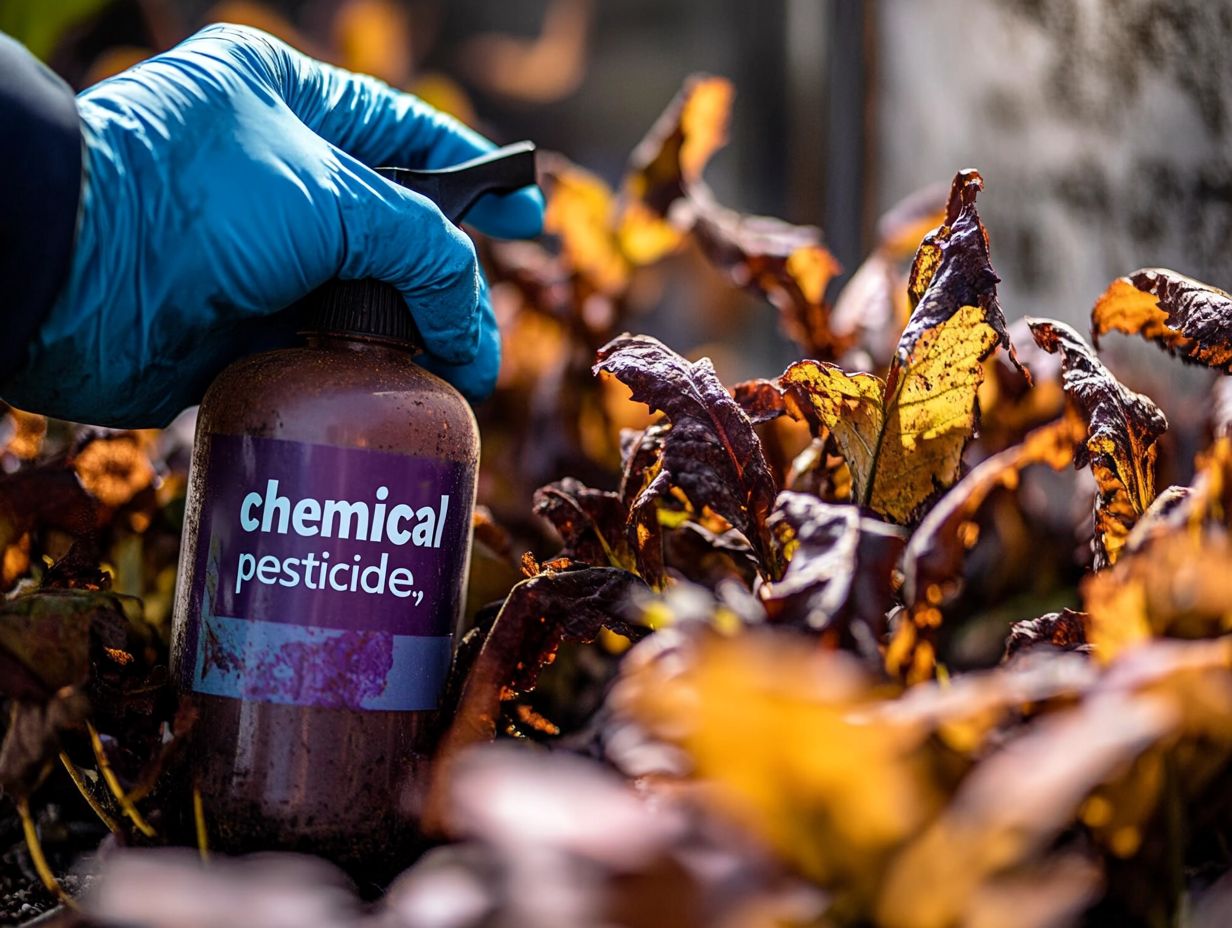
Exposure to chemical pesticides can bring about a range of health consequences, from acute toxicity symptoms like pesticide poisoning to long-term risks such as cancer and endocrine disruption (interference with the hormone systems that regulate various bodily functions).
These health risks can manifest in various ways, including respiratory issues and neurological disturbances that may arise shortly after exposure. This underscores the immediate dangers associated with pesticides.
On the other hand, chronic toxicity can result in subtle yet serious effects over time. It can potentially lead to reproductive harm and impairments in the immune system.
Understanding the differences between these acute and chronic responses is essential, especially for those working in agricultural environments and for communities living near treated fields. By recognizing these risks, you can make more informed decisions regarding pesticide use and advocate for safer pest management practices.
Environmental Impact of Chemical Pesticides
Chemical pesticides present considerable environmental risks that can impact ecosystems and biodiversity. This disruption can lead to groundwater contamination.
Considering these consequences is crucial for making informed choices about pest management.
Effects on Ecosystems and Wildlife
The use of chemical pesticides can have serious repercussions on wildlife, disrupting the delicate balance of ecosystems and contributing to a decline in biodiversity.
For example, certain insecticides are associated with alarming decreases in pollinator populations, particularly bees, which play an essential role in the reproduction of flowering plants.
Aquatic ecosystems are not spared either; runoff from agricultural fields introduces harmful chemicals into waterways, adversely impacting fish and amphibian populations.
Research has demonstrated that these substances can disrupt hormonal systems in various species, leading to reduced reproductive success and putting those populations at risk.
The consequences of such practices create a ripple effect throughout food webs and threaten ecological stability, highlighting the urgent need for sustainable pest management.
Alternatives to Chemical Pesticides
As you become increasingly aware of the health risks and environmental repercussions associated with chemical pesticides, it s only natural to seek out natural and organic pest control methods. These approaches prioritize the balance of ecosystems and embrace sustainability, aligning with a more conscientious way of managing pests.
Natural and Organic Pest Control Methods
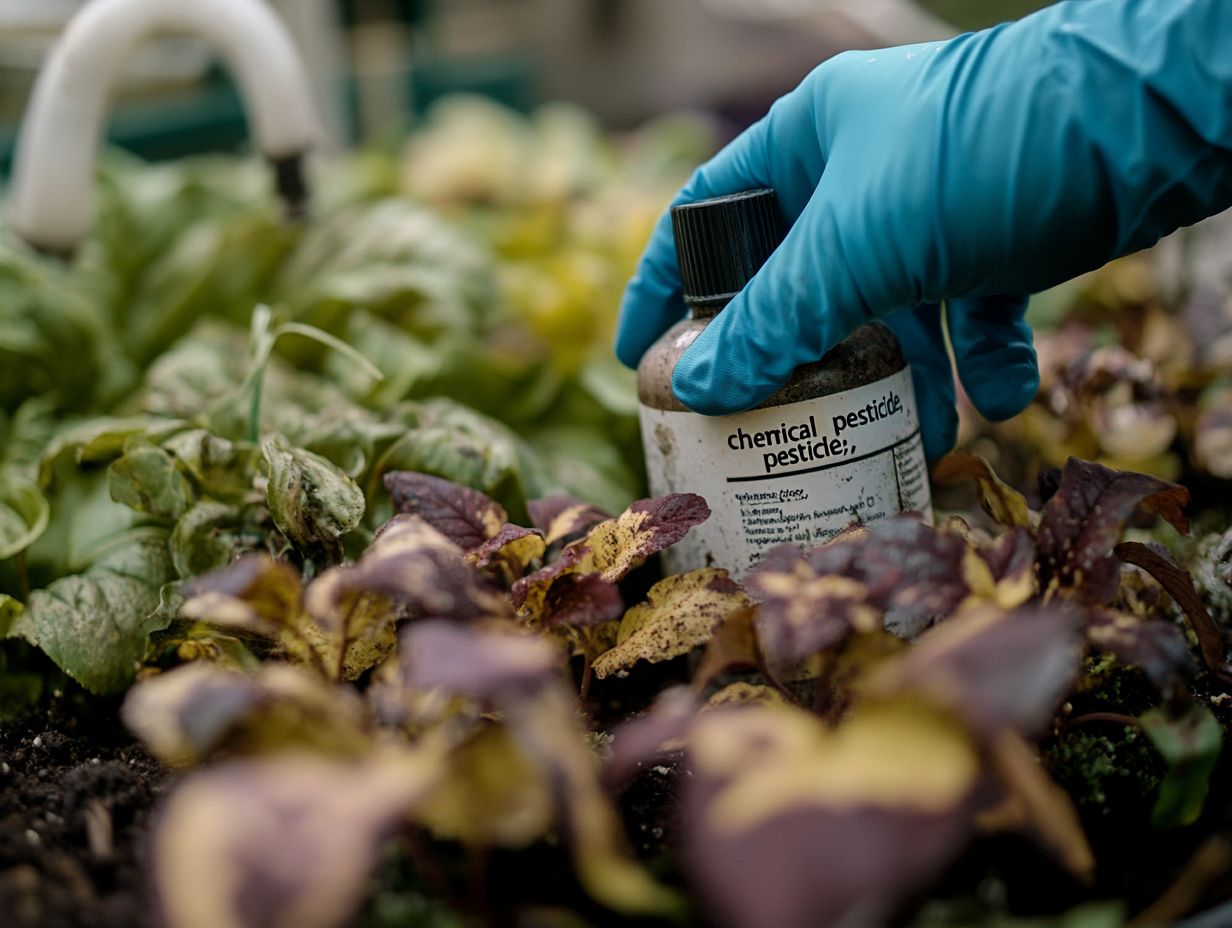
Natural pest control methods, including biological control (using natural predators to manage pests) and the introduction of beneficial insects, present effective alternatives to chemical pesticides in organic farming.
By leveraging the capabilities of nature, these methods promote a sustainable agricultural approach that boosts your crop yield while nurturing biodiversity.
For instance, when you introduce predatory insects like ladybugs, you can significantly reduce aphid populations, protecting your precious plants while safeguarding the environment.
Techniques such as companion planting and the use of natural repellents further contribute to healthier ecosystems by minimizing soil degradation and preserving essential pollinators.
When you adopt these practices, you can cultivate organic foods with a richer nutrient profile, benefiting consumer health and supporting the intricate web of life that sustains our planet.
Regulations and Safety Measures
Regulations and safety measures regarding pesticide use are essential for safeguarding public health and protecting the environment. Organizations such as the EPA play a pivotal role in establishing national standards for pesticide products, ensuring that safety remains a top priority in agricultural practices.
Current Laws and Regulations on Pesticide Use
Current laws and regulations surrounding pesticide use aim to reduce the risks associated with chemical exposure. They implement stringent controls and thorough safety checks.
These measures, enforced by the Environmental Protection Agency (EPA), set national standards for pesticide application and safety. This ensures that substances undergo rigorous evaluation before being used commercially.
Through comprehensive assessments, the EPA examines potential hazards to human health and the environment. It particularly focuses on the effects of chemicals on water, soil, and non-target organisms.
These regulations minimize pesticide drift, reduce contamination, and safeguard public health. They also support sustainable agricultural practices while protecting ecosystems. By upholding these standards, the EPA plays an essential role in creating a safer environment and lowering the risks of adverse health outcomes associated with pesticide exposure.
Protective Measures for Farmers and Consumers
To ensure safety for both farmers and consumers, it is vital to implement protective measures, such as using personal protective equipment during pesticide application.
These measures are crucial for keeping you safe from harmful chemical exposure, which can lead to long-lasting health implications. By receiving proper training on the correct use of personal protective equipment like gloves, masks, and protective clothing you can effectively shield yourself from harmful substances.
Following established guidelines protects agricultural workers and contributes to a safer food supply.
Being aware of pesticide safety is essential. It promotes the adoption of practices that minimize health risks and environmental impacts. This creates a sustainable approach to agriculture that safeguards both human health and the ecosystem.
Frequently Asked Questions
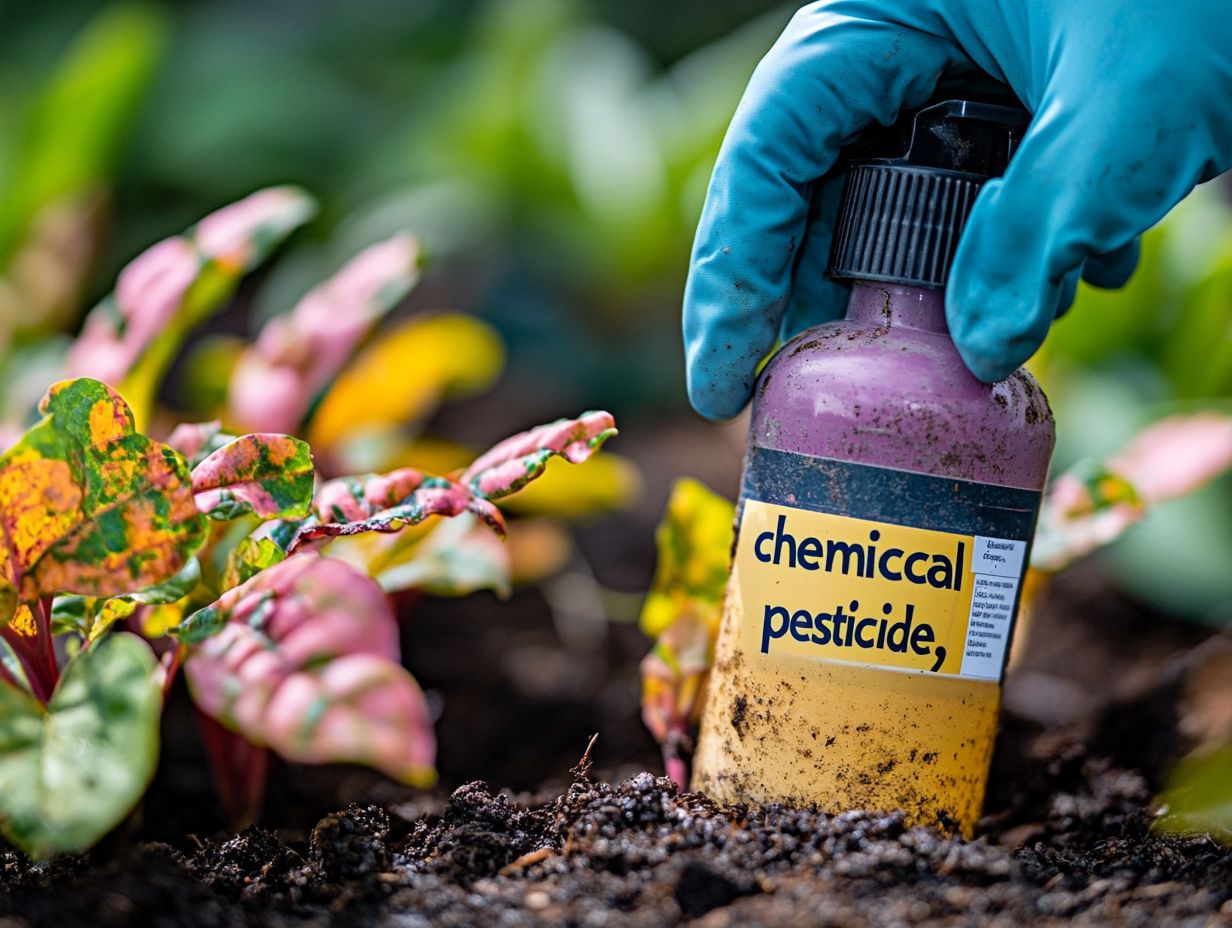
What are chemical pesticides and why are they dangerous?
Chemical pesticides are synthetic substances used to kill or control pests such as insects, weeds, and fungi. They are dangerous because they can harm humans, animals, and the environment.
How do chemical pesticides harm humans?
Chemical pesticides can harm humans through direct exposure, such as skin contact or ingestion, and through indirect exposure, like consuming contaminated food or water. They have been linked to various health issues, including cancer, neurological disorders, and reproductive problems.
What are the environmental dangers of chemical pesticides?
Chemical pesticides can contaminate soil and water, harming plants and animals. They can also kill beneficial insects and pollinators, disrupt ecosystems, and contribute to air pollution.
Are there safer alternatives to chemical pesticides?
Yes, there are safer alternatives to chemical pesticides, such as biological pesticides, natural repellents, and integrated pest management techniques. These methods are less harmful to humans and the environment.
How can I protect myself from the dangers of chemical pesticides?
You can protect yourself by limiting your use of chemical pesticides, wearing protective clothing when handling them, and following the instructions carefully. You can also choose organic produce and look for natural pest control methods for your home and garden.
What steps can we take to reduce the use of chemical pesticides?
To reduce the use of chemical pesticides, we can support organic farming practices, educate ourselves on alternative pest control methods, and advocate for stricter regulations on pesticide use. We can also choose to buy products that are free from chemical pesticides.
Stay informed and make safer choices for a healthier world!


